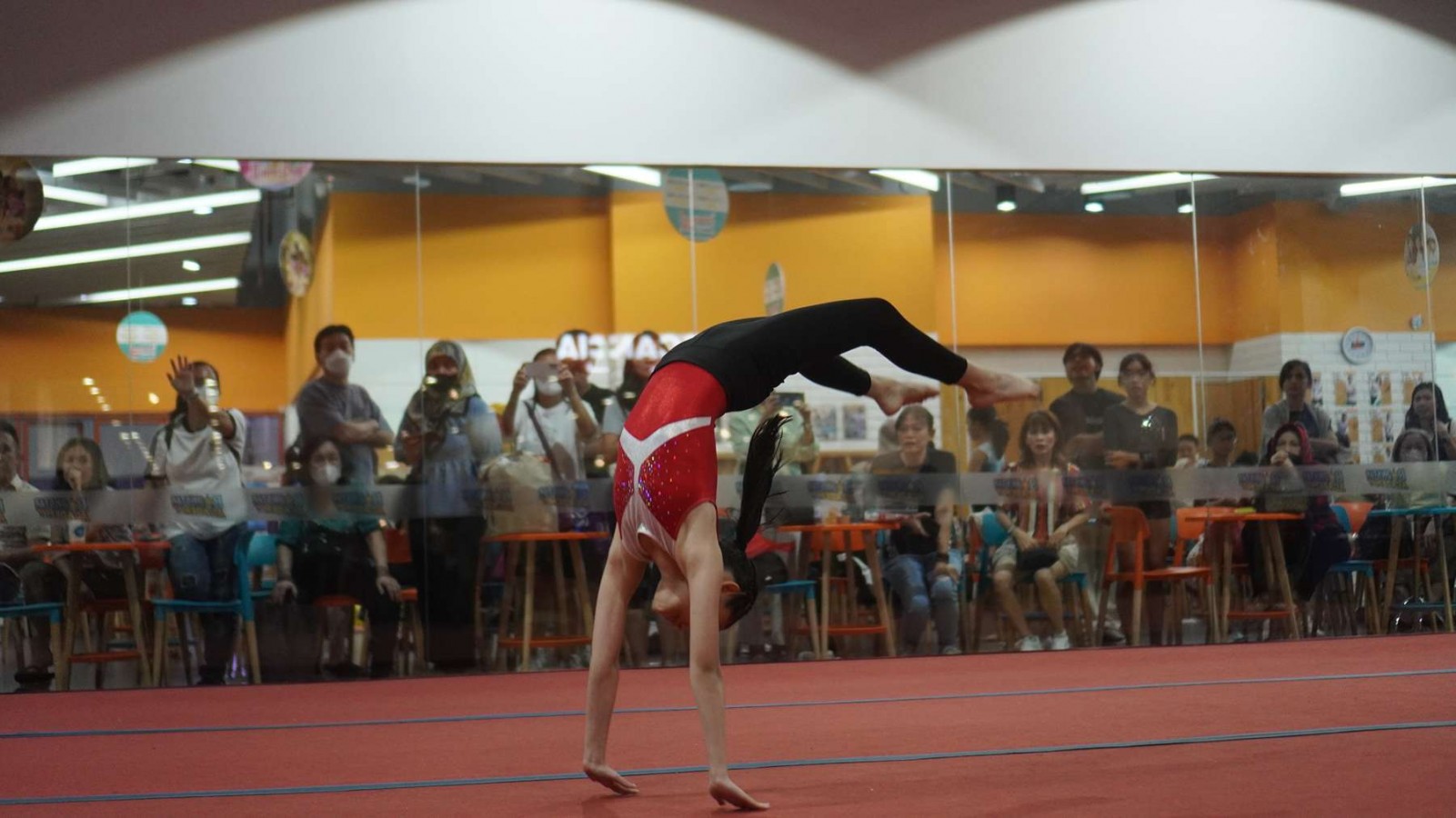Compulsory Gymnastics Levels: A Comprehensive Guide

For aspiring gymnasts, understanding the different levels of competition is crucial. In the world of gymnastics, compulsory gymnastics levels serve as the foundation upon which athletes build their skills and technique.
In this comprehensive guide, we'll delve into what compulsory gymnastics entails, the skills required to master at the compulsory level, and how it differs from optional gymnastics.
What is Compulsory Gymnastics?
Compulsory gymnastics refers to a standardized set of routines and skills that gymnasts must perform in competition. These routines are predefined by the governing body of gymnastics, typically the International Gymnastics Federation (FIG) or national gymnastics federations.
The purpose of compulsory gymnastics is to ensure that gymnasts develop a solid foundation of fundamental skills, form, and technique before advancing to higher levels of competition.
Skills Needed to Master at the Compulsory Level
At the compulsory level, gymnasts are required to demonstrate proficiency in a range of skills across four apparatus: vault, uneven bars, balance beam, and floor exercise. Here's a breakdown of the key skills typically mastered at the compulsory level:
Levels 1-3 serve as an introduction to gymnastics for young athletes. These initial developmental stages may or may not involve competitive aspects and are not obligatory. It is at levels four and five where all gymnasts typically commence their competitive journey.
Based on All Gymnasts, specific skill requirements for compulsory gymnastics are delineated according to each level, such as:
1. Level One
- Pull-over on the bars
- Cast on the bars
- Back-hip circle on the bars
- Needle kick on the balance beam
- Stretch jump on the balance beam
- Cartwheel to a 3/4 handstand dismount on the balance beam
- Forward and backward rolls on the floor
2. Level Two
- Glide swing on the bars
- Underswing dismount on the bars
- Arabesque to 30 degrees on the balance beam
- Cartwheel to side handstand dismount on the balance beam
- Backward roll to pushup position on the floor
- Bride back kickover on the floor
- Split leap with 60-degree leg separation on the floor
3. Level Three
- Handspring over a raised mat on the vault
- Glide swing and pullover on the bars
- Squat-on, stretch jump dismount on the bars
- Leap with 90-degree split on the balance beam
- 180-degree heel-snap turn in passe on the balance beam
- Handstand to bridge kickover on the floor
4. Level Four
- Front handspring on the vault
- Straddle or pike glide kip on the bars
- Long-hang kip on the bars
- Cartwheel on the balance beam
- 180-degree squat turn on the balance beam
- Cartwheel to side handstand and 1/4 turn dismount on the balance beam
- Round-off double back handspring on the floor
- Passe hop with 135-degree turn on the floor
5. Level Five
- Kip on the bars
- Cast to above horizontal on the bars
- Long-hang pullover on the bars
- Flyaway dismount on the bars
- Back tuck dismount on the balance beam
- Round-off back handspring back tuck on the floor
- Front handspring step out on the floor
Skills Needed to Master at the Optional Level
Optional gymnastics encompass levels 6 through 10, offering gymnasts the freedom to craft individualized routines tailored to their strengths. Unlike compulsory gymnastics, where routines are standardized, optional gymnastics allow for customization within a framework of guidelines and requirements.
In levels 6 through 10, the skill requirements become more intricate, reflecting the increasing level of expertise expected from gymnasts. Each level entails a distinct set of skills that gymnasts must demonstrate proficiency in. Here's a breakdown of the specific skill requirements for optional gymnastics by level:
1. Level Six
- Front handspring
- Cast to a minimum of 45 degrees above horizontal
- Minimum "A" value dismount
- Non-flight acro series or one acro flight skill
- Foot 360-degree turn
- Salto or aerial acro element
2. Level Seven
- Cast to handstand
- Salto dismount with a minimum "A" value
- Acro series with a minimum of two skills
- One acro flight skill
- Single foot 360-degree turn
- Front acro series with a minimum of two skills
3. Level Eight
- Salto dismount with a minimum "A" value
- One minimum "B" skill with flight or turn
- Front handspring minimum
- Single foot 360-degree turn
- Acro series with two skills, one with flight
- One 180-degree split jump or leap
- One acro series with two saltos (can be directly connected saltos)
4. Level Nine
- Minimum of two bar changes
- Minimum "B" value flight skill
- Minimum "C" value flight skill
- Acro series with a minimum of two flight elements
- Minimum "B" value aerial or salto dismount
- One acro series with two saltos (can be directly connected)
- Dance passage with a minimum of two leaps, jumps, or hops, one with a 180-degree split
5. Level 10
- Minimum "C" value flight skill
- Minimum "B" value flight skill
- Minimum "C" value salto dismount
- One leap or jump with a 180-degree split
- Single foot minimum 360-degree turn
- Acro series with two saltos (can be directly connected)
- Minimum of one "C" value salto in passage
Differences Between Compulsory and Optional Gymnastics
While compulsory gymnastics establishes a solid foundation, optional gymnastics allows for greater creativity, individuality, and difficulty in routines. Here are some key differences between compulsory and optional gymnastics:
A. Routine Composition
In compulsory gymnastics, routines are standardized and predetermined, with specific skills and sequences required at each level. Optional gymnastics, on the other hand, allows gymnasts to choreograph their own routines, incorporating a wider range of skills and elements tailored to their strengths and preferences.
B. Difficulty Levels
Compulsory routines are designed to introduce fundamental skills and concepts progressively, with each level building upon the previous one. Optional gymnastics, however, allows gymnasts to choose from a broader repertoire of skills, including more difficult and complex elements as they advance through the levels.
C. Judging Criteria
The judging criteria for compulsory and optional gymnastics differ slightly. In compulsory gymnastics, judges primarily assess the execution and presentation of predetermined skills, with deductions for deviations from the required elements.
In optional gymnastics, judges evaluate the difficulty, execution, composition, and artistry of the entire routine, awarding scores based on the overall performance.
D. Competitive Pathway
Compulsory gymnastics serves as a stepping stone to optional gymnastics, providing gymnasts with the foundational skills and experience needed to succeed at higher levels of competition.
While compulsory levels typically culminate in regional and national championships, optional gymnastics offers opportunities for gymnasts to compete at elite international events such as the Olympic Games and World Championships.
Enroll in a Gymnastics Program Right Away!
Compulsory gymnastics lays the groundwork for success in the sport, emphasizing technique, discipline, and consistency. As gymnasts progress through the compulsory levels, they develop the skills, confidence, and competitive mindset necessary to excel in optional gymnastics and beyond.
If your children show an interest in gymnastics, enrolling them in a reputable program can be a fantastic opportunity to enhance their skills and passion for the sport. Rockstar Academy stands out as the premier Sports & Performing Arts Academy, offering a diverse range of physical activity programs, including gymnastics.
Our Gymnastics Elite Classes are meticulously designed to propel students towards success in Gymnastics Testing and advancement within the USAG program. These specialized classes offer an extended duration and heightened intensity, ensuring students receive comprehensive training under the guidance of our most seasoned instructors.
By enrolling in our Elite Classes, students not only refine their skills but also cultivate the mindset and resilience necessary for elite-level competition.
Furthermore, Elite students gain exclusive access to a myriad of competitive opportunities both domestically and internationally. From local competitions across Indonesia to prestigious events on the global stage, our Elite students have the chance to showcase their talents and represent our academy with pride.
Additionally students will also get opportunities for participation in Gymnastics Elite Championships. These initiatives are integral to our commitment to supporting students as they progress to higher levels and prepare for national and international competitions.
Moreover, our Gymnastics Elite Championships promote values such as discipline, sportsmanship, and resilience, fostering a well-rounded athlete. As a testament to our dedication, we offer a complimentary trial class for those interested in exploring our offerings. If you're eager to embark on a journey of growth and achievement in gymnastics, don't hesitate to reach out to Rockstar Academy today!
FAQ
What is compulsory gymnastics?
Compulsory gymnastics refers to a standardized set of routines and skills that gymnasts must perform in competition. These routines are predefined by the governing body of gymnastics and serve as the foundation for developing fundamental skills, form, and technique.
At what age do gymnasts typically start compulsory gymnastics?
Gymnasts typically start compulsory gymnastics at a young age, often around 6 to 8 years old, after they have developed basic coordination, strength, and flexibility through recreational gymnastics or other physical activities.
Are compulsory gymnastics levels mandatory?
While participation in compulsory gymnastics levels is not mandatory, it is highly recommended for gymnasts who aspire to compete at higher levels in the sport. Compulsory levels provide essential foundational skills and experience that serve as a springboard for success in optional gymnastics and beyond.
What are the benefits of compulsory gymnastics?
Compulsory gymnastics offers several benefits, including:
- Building a solid foundation of fundamental skills, form, and technique.
- Developing discipline, focus, and perseverance.
- Providing a structured progression for skill development and competition readiness.
- Preparing gymnasts for success in optional gymnastics and higher levels of competition.



